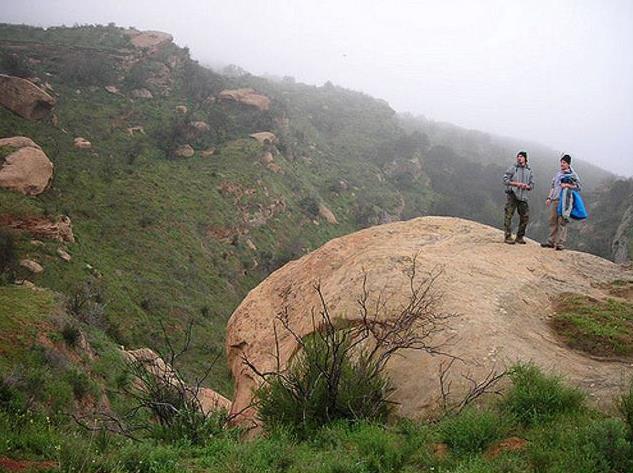
EnviroReporter.com Findings Summary
- Brandeis-Bardin Institute knew tritium plume under 2,878-acre camp since 1995 reports show
- 2017 BBI dioxin at 32 times nuclear Area IV background in Santa Susana Field Laboratory drainage
- 2017 report shows radioisotope tritium “elevated, due to past releases from SSFL”
- American Jewish University releases ‘fact sheet’ two days later contradicting own report
- AJU ‘fact sheet’ proclaims never “any evidence of contaminant migration from SSFL”
- Unorganized 2017 BBI report totals 1,372 pages for 8 soil and 6 water samples
- Poor handling of samples documented by lab for BBI’s 2017 report but still used
- 20 percent of 2017 BBI water tested positive for tritium
- 2015 report inaccurately claims Boeing stopped Area IV runoff into Northern Buffer Zone
- BBI finds in 2013 “elevated tritium in one of the new wells in the south-central region”
- 2006 tritium at Old Well Campsite shows SSFL groundwater contamination spreading north
- 2006 BBI “milk result indicates that area cows are grazing on grass containing perchlorate”
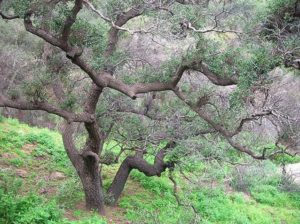
This 1991-2017 Brandeis-Bardin Reports Analysis by EnviroReporter.com (ER) supplements the exposé State papers over Brandeis-Bardin contamination. The analysis, working backwards from 2017 to 1991, was done in order to better explore the Brandeis-Bardin ‘white paper’ issued by California’s Department of Toxic Substances Control (DTSC).
The DTSC report extensively cites the TESTING MEMO 2017 performed by Brandeis-Bardin’s longtime environmental consultant, Joel I. Cehn. It was made public on the website of American Jewish University (AJU) which owns Brandeis-Bardin Campus (BBC or BBI). Summaries of reports dating back to 1991 are also on AJU’s website. These are analyzed too as their content was previously unavailable and conducted under Cehn throughout the last 26 years.
NBC4‘s I-Team of Joel Grover and Matthew Glasser are most responsible for the release of these documents in the wake of their ongoing LA’S NUCLEAR SECRET investigation. In fact, DTSC’s ‘white paper’ followed extensive pressure by AJU that the department does something to counter what was being exposed by the I-Team.
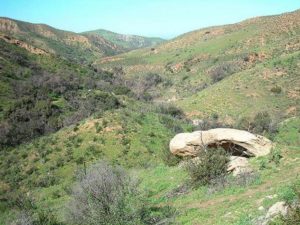
EnviroReporter.com‘s analysis of Cehn’s BBI reports, selected passages and data are highlighted. The original reports’ highlighting is noted as such. A bracketed EnviroReporter.com Note [ER NOTE] also follows these passages with its observations on the BBI reports.
Baseline comparisons of the background threshold values (BTVs) of radiological and chemical contaminants establish a solid scientific basis to look at toxic levels. That’s the standard which these pollutants will be cleaned up to at the adjacent Santa Susana Field Laboratory (SSFL) where NASA and Department of Energy (DOE) took place.
While this technical analysis isn’t breezy reading, the information presented herein was necessary to produce in order for EnviroReporter.com to write with authority State papers over Brandeis-Bardin contamination. DTSC and AJU claims that radiation and chemicals have not migrated from SSFL onto BBI are found to be factually inaccurate to put it as politely as possible.
Indeed, these reports show that BBI has known since 1991 that a continuous source of SSFL radiation has been flowing into the southwest part of the Jewish camp for decades all the up until today. The reports also reveal less than ideal scientific situations and data that raise questions, which ER asks. The proofs are detailed right on the spot leaving the reader with an accurate appraisal. These analyses are part of the ongoing investigation Brandeis-Bardin’s Toxic Denial.
Photographs by Danielle D.*
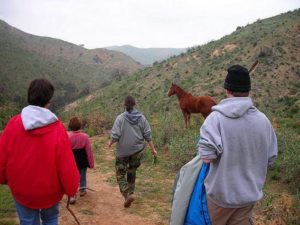
TESTING MEMO 2017
1,372 pages (pp) PDF
[http://aboutus.aju.edu/uploadedFiles/Updates1/Memo3_2017_R.pdf]
A. P. 2/1,372 DIOXINS IN SEDIMENTS
“SRE Drainage – 1.14 ppt.”
“This level is slightly above the Lookup Table’s background value of 0.912 ppt”
[ER NOTE: DTSC Chemical LUT says this is 2,3,7,8-TCDD TEQ1. USEPA Chemical BTV for 2,3,7,8-TCDD = 0.0358 pg/g (ppt) THEREFORE BBI DIOXIN HIT 31.8 TIMES BTV. “SRE Drainage” found in map on p. 6/1,372.]
B. P. 3/1,372
“Spring OS-7 contained tritium at 16.1 ± 6.4 pCi/L. A spring northeast of OS-7 (BB-16A) contained tritium at 41.9 ± 6.4 pCi/L. Both of these are slightly elevated, due to past releases from SSFL. Tritium levels continue to fall—OS-7 tested at 25 pCi/L in 2015—and will eventually become not detectable.”
[ER NOTE: PAGE 6/1,372 – MAP – OS-7 ABOUT 600 FEET DOWN FROM NBZ PROPERTY LINE.
CONTRADICTS AJU FACT SHEET HANDED OUT MARCH 29, 2017 TWO DAYS AFTER CEHN’S REPORT:
EnviroReporter.com reported on this in Brandeis-Bardin’s Toxic Denial:
“Environmental conditions on the Brandeis Bardin Campus have been studied extensively since 1991 by federal and state environmental agencies, as well as independent third-party engineers,” the AJU fact sheet states. “During that time, hundreds of soil, sediment, surface water, groundwater, and vegetation samples taken from the BBC have been analyzed. In 2016, an additional test – known as a gamma survey-was conducted on the main camp area and in the southern ravines. At no point in time have these tests shown any evidence of contaminant migration from SSFL.”
…
AJU has made no typo here as this claim is repeated. “In 1991, a rigorous testing program began at BBI to determine whether contamination at the SSFL had migrated to the BBI property,” says the fact sheet. “The results of those tests consistently show no migration from SSFL to the Brandeis Bardin property.”
The claim is repeated yet again this time citing AJU’s Tetra Tech report. “Tetra Tech found no evidence of contaminant migration from the SSFL,” reads the AJU fact sheet. Indeed, AJU’s shaky claims flow into leaky descriptions of how there is no way SSFL’s toxins can even get to Brandeis-Bardin property.
“Since 2010, storm water runoff from SSFL is primarily diverted away from Brandeis Bardin,” the paper claims. “Storm water diversions have been constructed on the SSFL to prevent the flow of runoff from the SSFL on or toward the BBC.”]
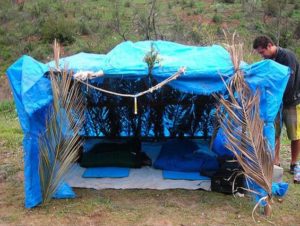
C. P. 3/1,372
“In 2012, EPA’s contractor detected gross alpha radioactivity in spring OS-10.** That result was attributed to sediment in the water sample (see discussion below). That test was repeated here and OS-10 was negative for gross alpha radiation. The spring was also tested for radioactive strontium-90, and none was detected.
[ER NOTE: “Negative” and “none” are not what would be found. Unsound science.]
“Water collected in the sediment trap in the reactor area drainage was also tested for radioactivity. The test was negative for strontium-90, while the gross alpha test showed 16.2 ± 6.9 pCi/L. This sample sat in the sediment trap, in contact with soil, for up to a year. This would account for a positive finding, with the most likely source of radioactivity being natural radioactive minerals [ER NOTE: 1,372-PAGE TEST AND STUDY CAN’T DETERMINE ISOTOPE?] dissolved out of the soil (e.g., thorium, radium). Reactor products can be largely ruled out since very few of these emit alpha radiation, and since Sr- 90 was not detected. On the other hand, thorium, radium, and nearly all naturally radioactive minerals emit alpha radiation. There was insufficient volume to test for gamma-emitting nuclides. [ER NOTE: WHY WAS THAT? COULDN’T MORE HAVE BEEN SAMPLED?]
“CONCLUSIONS AND RECOMMENDATIONS
“Results are unremarkable. Analytes are at or near background levels [ER NOTE: – FALSE – DIOXIN AT 31.8 BTV, for one], or not present at all. Results continue to show that the BBC property is free of contamination. [ER NOTE: WHOLE REPORT CREDIBILITY IN QUESTION SINCE CEHN HAD ACCESS TO SAME GOV REPORTS ER DID] Drainage ravine sediments that could potentially carry contaminants toward BBC are free of contamination [ER NOTE: TRITIUM IN BB-16A and other springs DISPROVES THIS]. Groundwater near the property line contains trace levels of tritium, but these are diminishing. I wouldn’t recommend further testing for at least another year.
“Copies of the lab reports are attached. Please contact me if you have any questions.”
[ER NOTE: AJU provided only this lengthy and confusing report, with no table of contents, for 2017. Not one other year comes with a report like this as will be seen following.]
3A. PAGE 4 SHOWS 6 LOCATIONS FOR SOIL TESTING; PAGE 5 SHOWS 6 LOCATIONS FOR WATER TESTING AND 20% TEST POSITIVE FOR SSFL TRITIUM.
D. 5/1,372: “Table 2. Water Tested”
Location: Spring OS-10
Analyzed for: TCE, Tritium, Stronium-90, Gross alpha rad.
Comments: Near Old Well campsite”
[ER NOTE: Cehn has this conflated perhaps. OS-10, the bathtub well reported on in Brandeis-Bardin’s Toxic Denial, is not “Near Old Well campsite,” meaning OWC-2 was NEVER retested for tritium found in 2006. Regardless, his OS-10 sample was handled poorly as 4A shows below.]
DTSC report on OS-10: http://www.dtsc-ssfl.com/files/lib_offsite_investig/bbi/Reports/67220_Feb_2014_OS-10_lab_results.pdf
P. 26/43 of above OS-10 report says water collected 2/18/14
[ER NOTE: Brandeis-Bardin’s Toxic Denial map, https://www.enviroreporter.com/wp-content/uploads/2017/01/Brandeis-Bardin-OS-10-well-with-high-radiation.jpg, shows OS-10 to be 0.78 miles apart. [Measuring on full screen, distance = 9.3 cm with 4.5 cm = 2,000′ therefore 9.3/4.5 x 2000 = 4133’/5280 = 0.78 miles.
Further confusing locations, the 1,372-page report has a map on page 6 showing “Spring OS10” about 2/3rds of the way from the real OS-10 and what appears to be the Old Well campsite. EnviroReporter.com could not find in this massive report, with no table of contents or index, just exactly what were the measurements of the waters cited as “Spring OS10.” Whatever they were, apparently they didn’t arrive at the lab without complications.]
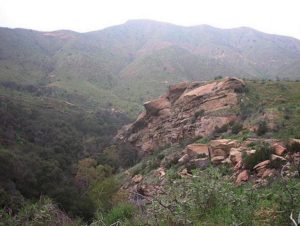
E. P. 10/1,372: “The temperature of the samples upon receipt was 15 degrees C. After a discussion with the client, the decision was made to proceed with analysis. Sample OS-10 (VOA) collected 1/16/2017—not preserved—received 1/24/2017 with hold time exceeded. Decision made by client to proceed with all analysis.”
[ER NOTE: That temperature is over double the 6 degree C limit the lab references following. Add to that a sample wasn’t preserved and its hold time exceeded. Regardless, Cehn gave the go-ahead even knowing NBC4‘s I-Team had BBI environmental tests in their sites and careful handling of samples might be important.]
F. P. 10/1,372: “This data package contains sample and QC results for eight (8) soil samples requested for the above referenced project on 1/23/2017”
[ER NOTE: JUST 8 SOIL SAMPLES for all of Brandeis-Bardin’s 2,878 acres or one every 360 acres. Contrast that with the hundreds of samples per acre done when accessing Area IV’s radiation and chemical contamination half a decade ago.]
G. P. 32/1,372: “I received a call on 1/27/17 from Eurofins (Stacy Hess) saying that they had received the samples on 1/26/17 but that they were above the 6 degrees C maximum temperature and wanted to know if we were going to re-submit the samples, wrote the lab’s Rodney Varnell Feb. 6, 2017 to Cehn. “Taking the previous discussion with you about ARS receiving the samples above the 6 degrees C maximum temperature into consideration, I authorized her to proceed with the analysis.”
Cehn replied later that morning “A-OK.”
[ER NOTE: Even this few number of soil samples seems to have been mishandled with little concern to correct mistakes and re-submit for analysis.]
H. P. 1,091/1,372: “This data package contains sample and QC results for four (4) aqueous samples (3 actual samples and 1 trip blank) requested for the above referenced project on 1/23/2017.”
…
“Sample OS-10 was collected on 1/16/2017 and received on 1/24/2017 exceeding holding time for a non-preserved sample. Samples OS-3 and BB-17 expired the day of receipt but were all analyzed after consulting with the client who authorized analysis. The samples were also above the 6 degree C limit and all were authorized for analysis by the client. Some of the requested analytical results did not meet the required detection limits due to insufficient sample volume and possible matrix interference.”
[ER NOTE: JUST THREE WATER SAMPLES for 2,878 acres or one for every 959 acres… And, again there appears to have been problems in the handling of the aqueous samples meaning that both water and soil samples were not handled according to lab spec. According to AJU’s report here, all 1,372 pages for 11 soil and water samples, Cehn delivered the samples too late, non-preserved and too hot yet Cehn A-OKAY’d them all the same.]
I. P. 1,093/1,372: “Samples received not preserved except for Trip Blank and OS-3 for VOA.”
J. P. 1,096/1,372: OS-3, 0S-10 & BB-17:
K. P. 1,100/1,372: “OS-10 received in unpreserved 40 ml vial”
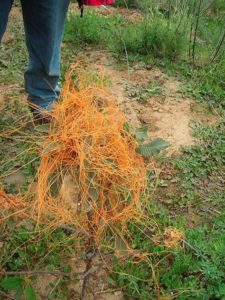
1. BBC (BBI) 2015 Winter Testing Results, December 2015
http://aboutus.aju.edu/uploadedFiles/Updates1/BBC%20(BCI)%202015%20Winter%20Testing%20Results,%20December%202015.pdf :
7 pp
[ER NOTE: Old well campsite NOT tested for tritium in the water after shocking 2006 discovery.]
P. 1/7: “I should note that since about 2012, Boeing has stopped discharging rainwater runoff from Area IV into the Northern Buffer Zone.” [ER NOTE: FALSE]
P. 2/7: “Three samples near the property line (Boeing Runoffs 2b and SRE) showed heavier organics at 140 to 190 parts per million (ppm). All other results were between less than 1 and 67 ppm.
“Although a small residue was detected this month, levels are minor and safe, and don’t extend far into BBC property. Hydrocarbons due to petroleum products are quite common in developed areas.”
P. 2/7: “Tritium is the most mobile of the radioactive elements found at Boeing. It has been found in groundwater and vegetation near the property line. Testing is done to gauge its movement in groundwater, which is toward BBC. Water was collected from five flowing springs. It was also collected from plant foliage, close to the property line. This method collects water from plant transpiration, and has been an efficient way to collect groundwater, without the need for a drilled well. Locations are listed in Table 2.
“Results show very low levels of tritium (up to 26 pCi/ L) in the springs at the southwest corner of the property. No tritium was detected more distant from the property line, at OS-9. In 2007, I measured higher levels (up to 140 pCi/L) in the southwest area but slightly lower levels last year (up to 10 pCi/L). In 1995, levels were as high as 520 picocuries per liter of water (pCi/L) in Boeing’s Northern Buffer Zone. The drop over time is partly due to radioactive decay-half of the tritium transmutes to helium every 12 years. It is also due to dispersion and dilution. Figure 3 displays the results and includes a rainwater sample tested in 2006, containing natural tritium at 29 pCi/L. Natural tritium is created by cosmic rays in the upper atmosphere.”
P. 3/7: “CONCLUSIONS AND RECOMMENDATIONS
The observed levels of tritium in groundwater show a decline based on previous testing. They also compare with levels naturally found in the environment. Tritium was released by Rocketdyne decades ago and levels are expected to continue decreasing.”
P. 5/7: MAP
P. 7/7: See “Figure 3. Tritium Results”
[ER NOTE: Rain used to make it look normal that tritium is squirting out of all sources but one 5/6 springs have tritium]
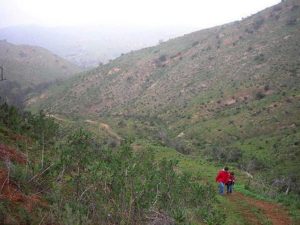
2. BBC (BBI) 2014 Summer Testing Results, September 2014
http://aboutus.aju.edu/uploadedFiles/Updates1/BBC_BCI_2014_Summer_Testing_Results_September_2014.pdf
3 pp
[ER NOTE: Old well campsite NOT tested for tritium in the water after shocking 2006 discovery.]
P. 1/3
“Groundwater near the southwest property line has a history of tritium contamination, but that has been decreasing over time.”
[ER NOTE: Report has highlighting on it suggesting AJU carefully inspected report, meaning they may have missed the continuing “tritium contamination” through lack of scientific acumen or deliberately ignored it.]
P. 1-2/3
“Citrus from the Main House orchard was tested for tritium. The level measured (22 pCi L) is consistent with natural levels measured in rainwater in years past.” [AJU HIGHLIGHTING]
[ER NOTE: WAIT A MINUTE! 2013 Cehn report says “Rainwater contains natural tritium, which is created in the upper atmosphere. Some of this water will eventually reach the groundwater aquifer. But the very long residence time in the aquifer results in the complete depletion of natural tritium via radioactive decay.” That means SSFL tritium may have made it to center of camp, according to Cehn’s own logic! Main house orchard is lemons.]
P. 2/3
“Tritium in Groundwater
Tritium is the most mobile of the radioactive elements found at Boeing. It has been found in groundwater and vegetation near the property line. Testing is done to gauge its movement groundwater, which is toward BBC. Water was collected from three flowing springs. I attempted to collect water transpired from plants closer to the property line.
However, this was unsuccessful, likely due to the drought and the lowered water table. In the past, this has been an efficient way to collect groundwater, without the need for a drilled well. But this year, no water could be collected from plant transpiration.”
[ER NOTE: Cehn is speaking accurately here.]
P. 2/3
“Results show near zero levels of tritium in the springs at the southwest corner of the property (Table 2).[ORIGINAL HIGHLIGHTING] In 1995, levels were as high as 520 picocuries per liter of water (pCi/L) in this area. The drop may be due to groundwater movement being affected by the drought. It may simply be due to a decrease via natural processes such as dispersion. I measured 25 pCi/L in this area in 2007. Note that groundwater typically has no tritium content, as opposed to surface water.[ER HIGHLIGHTING] Natural tritium is created by cosmic rays in the upper atmosphere.”.
[ER NOTE: By presumably AJU highlighting this, it shows they paid special attention to tritium and therefore knew it had been in its groundwater for years flowing out at the surface.]
P. 2/3
“CONCLUSIONS AND RECOMMENDATIONS
“The only change observed in this summer’s testing is a drop in the levels of tritium in groundwater. Tritium was released by Boeing decades ago and levels have been slowly decreasing. We should re-test groundwater after the drought is over, to see if contamination returns.”
[ER NOTE: Tritium DOES return when the rains return.]
P. 3/3: Shows everything tested but not one number.
[ER NOTE: Useless and concealing.]
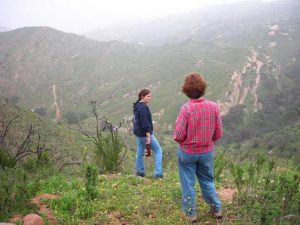
3. Testing of New Wells at BBC, December 2013
http://aboutus.aju.edu/uploadedFiles/Updates1/Testing_of_New_Wells_at_BBC_December_2013.pdf
5 pp
[ER NOTE: Old well campsite NOT tested for tritium in the water after 2006 discovery.]
P. 1-2/5
“SUMMARY OF TESTING RESULTS
Tritium in Groundwater
Tritium is the most mobile of the radioactive elements found at Boeing. It has been found in groundwater and vegetation near the property line. Testing is done to gauge its movement in groundwater, which is toward BBC. Results show possible elevated tritium in one of the new wells in the south-central region of the property (New Wcll SP-424A). The level measured is 12 picocuries per liter of water (pCi/L). This compares to 19 pCi/L measured from a well in the southwest region two years ago. However, the value is rather close to the laboratory’s limit of detection (9.7 pCi/L), and may be a statistical artifact (false positive). It may also be due to natural tritium in the atmosphere that has infiltrated this shallow (8 ft.) well.(1) I plan to compare my results on this well with Boeing’s, when they become available.
“In any event, the measured levels are safe; they are well below the drinking water limit (20,000 pCi/L). [AJU HIGHLIGHTING] Results are shown in Table 1. The tap water result may or may not indicate the presence of tritium. If present, it is due to natural, atmospheric tritium. [ER HIGHLIGHTING] The lab report is attached as an appendix.”
FOOTNOTE (1): “1 Rainwater contains natural tritium, which is created in the upper atmosphere. Some of this water will eventually reach the groundwater aquifer. But the very long residence time in the aquifer results in the complete depletion of natural tritium via radioactive decay.”
[ER NOTE: WOW! Tritium in SP-424A in south-central BBI! And “tap water result may or may not indicate the presence of tritium. If present, it is due to natural, atmospheric tritium” is unclear and false but will reveal itself as this examination continues. And Cehn contradicts himself in Footnote 1 saying tap water got tritium from rain. Suggests orchard is sucking up groundwater with SSFL tritium in it as the rain is not the source by Cehn’s own words analyzed herein.]
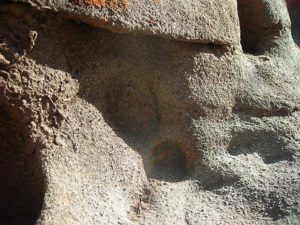
P. 3/5
SP-424A 131104 (Nov 4, 2013) 12.9 ± 9.7 pCi/L
< 9.7 = less than 9.7, which is the lab’s detection limit
A, B, & C refer to separate wells in the cluster-A is the shallowest, C the deepest.
[ER NOTE: Tritium wasn’t the only troubling toxin found in SP-424A, B & C. And as Cehn suggested, Boeing was doing the testing so the results would come along. Perhaps Cehn and AJU missed this report. DTSC did.]
P. 5/5: Poorly displayed map shows where “New Well SP-424” is located on BB property off Area IV.
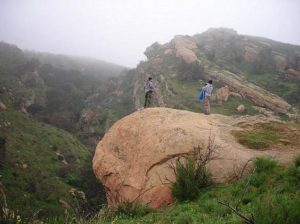
4. BBC (BBI) New Wells Testing Results, January 2012
http://aboutus.aju.edu/uploadedFiles/Updates1/BBC_BCI_New_Wells_Testing_Results_January_2012.pdf
3 pp
[ER NOTE: Old well campsite NOT tested for tritium in the water after 2006 discovery.]
P. 1/3
SUMMARY OF TESTING RESULTS
Tritium in Groundwater .
Tritium is the most mobile of the radioactive elements found at Boeing. It has been found in groundwater and vegetation near the property line. Testing is done to gauge its movement in groundwater, which is toward BBC. Results show elevated tritium in one of the new wells in the southwest comer of the property (see map, Figure 1, location: “New Well S19”). The level measured is 19 picocuries per liter of water (pCi/L) This compares to 69 pCi/L measured from a spring in this same area in 1995. The reduction over this period is consistent with test data from Boeing’ property. The drop is due to two factors radioactive decay of tritium and dispersion and dilution of tritium in the groundwater. The measured levels a.re safe; they are well below the drinking water limit 20,000 pCi/ L. [ORIGINAL AJU HIGHLIGHTING]
[ER NOTE: By highlighting this, AJU not only acknowledges reading it but also tries to have it both ways: Claiming no SSFL contamination offsite and that this contamination is actually a good sign in its decay, instead of noting it for what it is – continuing SSFL tritium release in a Brandeis-Bardin spring.]
P. 2/3: “The new wells vary in distance to the property line, from 700 feet to one-half mile.”
5. BBC (BBI) 2011 Summer Testing Results, August 2011
http://aboutus.aju.edu/uploadedFiles/Updates1/BBC_BCI_2011_Summer_Testing_Results_August_2011.pdf
4 pp
[ER NOTE: Old well campsite NOT tested for tritium in the water after 2006 discovery.]
P. 1/4: “Also tested were natural springs on the property, which are sometimes used for watering livestock.”
P. 1/4:
“Tritium is the most mobile of the radioactive elements found at Boeing. It has been found in groundwater and vegetation near the property line. Testing is done to gauge its movement in groundwater, which is toward BBC. Results only show tritium in one spring in the southwest comer of the property (see map, Figure 1, location: “Springs”). The level measured is 16 picocuries per liter of water (pCi/L). This compares to 69 pCi/L measured from this same spring in 1995. The reduction over this period is consistent with Boeing’s test data. The drop is due to two factors: radioactive decay of tritium and dispersion of tritium in the groundwater. These measured levels are safe; they are well below the drinking water limit (20 000 pCiL).” [ORIGINAL AJU HIGHLIGHTING]
[ER NOTE: Same paragraph as in 2012 report but highlighted differently.]
p. 2/4
CONCLUSIONS AND RECOMMENDATIONS
The only change observed in this summer’s testing is a reduction in the levels of tritium in groundwater. Tritium was released by Boeing decades ago and levels are slowly dropping. Although the groundwater is not used for human consumption, the tested locations are safe for drinking.
[ER NOTE: Cehn confirmation of Boeing contamination in Brandeis-Bardin groundwater.]
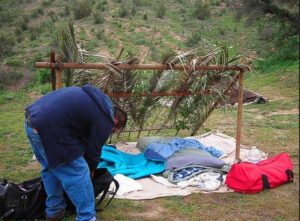
6. BBC (BBI) 2009 Winter Testing Results, January 2010
http://aboutus.aju.edu/uploadedFiles/Updates1/BBC_BCI_2009_Winter_Testing_Results_January_2010.pdf
[ER NOTE: Old well campsite NOT tested for tritium in the water after 2006 discovery.]
7. BBC (BBI) 2007 Summer Testing Results, July 2007
“>http://aboutus.aju.edu/uploadedFiles/Updates1/BBC_BBI_2007_Summer_Testing_Results_July_2007.pdf
7 pp
P. 1/7: “Vegetation did show low levels of perchlorate, but they are in line with area background levels.”
[ER NOTE: There is no “background level” of perchlorate for vegetables. It should be zero contamination.]
P. 1/7: “The lab did not test for tritium during this round.”
P. 1/7: “Perchlorate. As you know, perchlorate is pervasive in Southern California. I found a range of levels that seemed to depend on plant type. The highest level was in leaves from the Flower Garden. In the adjacent Main House citrus grove, levels were much lower. In the nearby Arness Grove, levels in apricot tree leaves were still lower. Background, measured earlier in a pepper tree in west Simi Valley, was about one-third less than the highest level detected at BBI, but was twice the average. Results are plotted in Figure 2.”
P. 3/7: Figure 2. Perchlorate in Plant Leaves
Flower Garden: ~78 ppb
Gan Area Garden: ~46 ppb
Main Gate Garden: ~22 ppb
Organic Garden: ~10 ppb
Background, Simi: 50 ppb
[ER NOTE: CA MCL for perchlorate is 6 ppb making these shocking readings. In a following year – 2015 Winter Testing Results – Cehn says testing plant leaves can accurately correspond to groundwater levels of contaminants. The Flower Garden is 13 times California’s perchlorate MCL.]
Also where did this “Background, Simi: 50 ppb” come from? Background for what? Leaves? Unlikely. This reporter has never seen any medium in Simi Valley determined to have a background of 50 ppb since my reporting began in 1998. And Cehn doesn’t seem to revisit the leaves in subsequent reports.]
P. 5/7: [ER NOTE: Old well campsite NOT tested for tritium in the water after 2006 discovery. Why wasn’t the tritium tested for?]
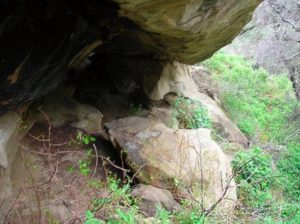
8. BBC (BBI) Testing Reports, May, 2006
http://aboutus.aju.edu/uploadedFiles/Updates1/BBC_BBI_Testing_Reports_May_2006.pdf
5 pp
P. 1/5: “Water and citrus (juice) samples were tested for tritium and only background levels were detected (10-30 pCi/L-groundwater background is lower.) Levels near the old property line are thousands of pCi/L; the drinking water limit is 20,000.”
[ER NOTE: “[G]roundwater background is lower” is correct. It is zero according to Cehn in latter reports. So detecting any tritium is significant, especially in citrus juice produced at Brandeis-Bardin. A 2014 Lawrence Livermore National Laboratory study shows that the tritium background in the Simi Valley area is closer to 0 pCi/L – zero]
P. 1/5: “Although no background vegetation samples were collected, the background milk result indicates that area cows are grazing on grass containing perchlorate. In general, cows bio-concentrate contaminants in the milk. Perchlorate appears to be pervasive in Southern California and Arizona.”
[ER NOTE: We reported on this in Brandeis-Bardin’s Toxic Denial. Cehn is right about the cattle munching perchlorate-tainted vegetation and that the toxic rocket fuel oxidizer is pervasive in Southern California. What he leaves out is the obvious source of the contamination, the bordering SSFL where over 30,000 rocket tests, many with perchlorate, were fired off. The wording here is misleading.]
P. 4/5: Shows grid of results that says that The “Old well campsite” [OWC-2] had water tested positive for tritium at 29 pCi/L in 2006. The map on page 5/5 of this report appears to place the Old well campsite here.
[ER NOTE: This is down much farther into Brandeis-Bardin than tritium detected in camp highlands adjacent nuclear Area IV of SSFL. The distance of OWC-2 from the closest border with Area IV is approximately 1.4 miles to the northeast instead of to the northwest like the tritium in Brandeis-Bardin in its southwestern corner.]
Google map in terrain view showing SRE to OWC-2: https://www.google.com/maps/place/Santa+Susana+Field+Laboratory/@34.2423162,-118.7015815,1894m/data=!3m1!1e3!4m5!3m4!1s0x0:0x9c16b990c38478a4!8m2!3d34.2319335!4d-118.6960651
Working out scale on above map: 29.5 cm from SRE to OWC-2 with 2 cm = 500 feet therefore 29.5/2 x 500 = 7,375 feet or 7375/5280 = 1.4 miles
See 3A for more details: The 1,372-page report has a map on page 6 showing “Spring OS10” about 2/3rds of the way from the real OS-10 and what appears to be the Old Well campsite.]
P. 5/5: Map confirms EnviroReporter.com identification of location of “Old Well campsite.”
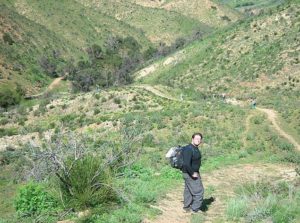
9. February 1997 Report
http://aboutus.aju.edu/uploadedFiles/Updates1/1997_FebCehn-Opinions%20Related%20to%20Enviro%20Contamination.pdf
14 pp with new AJU copy
Sept. 21, 2015 NBC4 I-Team segment about this report
LA’s Nuclear Secret: Camp Cover-Up
http://www.nbclosangeles.com/investigations/I-Team-LAs-Nuclear-Secret-Camp-Cover-Up-344006382.html
P. 1/14
CEHN TO NBC4:
“With regard to your email, my concerns about possible future migration from the 1990s have proven to be unfounded, as demonstrated by hundreds of tests conducted over the past 18 years. This testing has confirmed that there has been no migration of contamination onto the current Brandeis property. Any migration would be contained on the 100 acres transferred to Rocketdyne (now Boeing) in 1998.”
[ER NOTE: This is factually inaccurate as Cehn’s has written himself over the years as examined here.]
P. 1/14
CEHN TO NBC4:
“My 1997 statement was based on the evidence we had at that time. It appears to me you are
trying to create a construct and conclusion that are not accurate. At the time, I stated that portions of the 100-acre site — not used for camp operations and ultimately sold to Rocketdyne –
– were contaminated. Given that the contamination had migrated from SSFL to parts of that 100- acre site, we were concerned that the migration might continue to other areas of Brandeis. That didn’t happen; any migration has remained on that 100-acre site.”
[ER NOTE: Factually inaccurate again.]
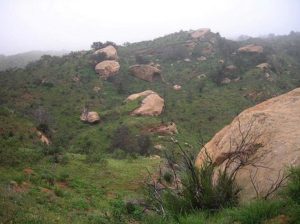
P. 4-5/14:
1. A. STATEMENT OF OPINIONS [of Joel Cehn in February 1997 report]
1. The Brandeis-Bardin Institute (Brandeis) property is contaminated, at both the surface and subsurface, with radiological and chemical contaminants. Radiological contaminants include tritium, strontium-90 and cesium-137. Chemical contaminants include trichloroethylene (TCE), polychlorinated biphenyls (PCBs), dichloroethylene (DCE), vinyl chloride, petroleum hydrocarbons, toluene, and polychlorinated dibenzo-p dioxins/dibenzofurans (dioxins.)
2. The levels of contamination are highest at the southern end of the property, and increase in the direction of the southern property line with Rocketdyne. All of the contaminants are also found on the Rocketdyne property and, thus, originate on that property.
3. Contaminated ground water is moving toward the center of the Brandeis property (from south to north). This groundwater is contaminated with TCE, DCE, vinyl chloride and tritium.
4. Surface water, when present, also moves toward the center of the Brandeis property. Some of this water is contaminated with tritium, strontium-90 and dioxins.
5. Soil on the Brandeis property is contaminated with tritium, strontium-90, cesium-137, PCB, dioxins, toluene and petroleum hydrocarbons. During rainwater runoff events, this soil is carried from the area of the southern property line, to central and northern areas of the Brandeis property.
6. Vegetation on the Brandeis property is contaminated with tritium, due to the plants’ uptake of contaminated groundwater via their root systems.
P. 11/14: Map shows Cs-137 soil detections in April 1995 of 156 pCi/kg and 44 pCi/kg in a ravine leading down to “Red Tank” that are far below and north of where NBZ would be drawn.
P. 12/14: Map shows PCB soil detections in June & November 1995 that are far below and north of where NBZ would be drawn.
P. 13/14: Map shows Dioxin soil detections in June 1995 that are far below and north of where NBZ would be drawn.
[ER NOTE: Factually accurate. Later denied once lawsuit secretly settled as shown above.]
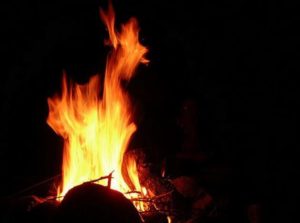
10. BBC (BBI) Crop Testing, April, 1996
http://aboutus.aju.edu/uploadedFiles/Updates1/BBC_BBI_Crop_Testing_April_1996.pdf
1 pp
P. 1/1: “Orange samples were taken from the Main House Orchard on January 25 [1996]… The test showed only background levels of tritium (18 pCi/L). A rainwater sample taken on the same date tested at 12 pCi/L.”z
[ER NOTE: See 3 to read Cehn writing that tritium from rain doesn’t impact groundwater, hence why it isn’t the source of the tritium in the oranges. According to Weather Underground, it didn’t rain in nearby Newhall on January 25, 1996.]
Testing Data: 1991-1995
http://aboutus.aju.edu/Default.aspx?id=15616 1991-1995
11. 1995 May_Report on Well Water Sampling Split Samples
http://aboutus.aju.edu/uploadedFiles/KNBC/1995_May_Report%20on%20Well%20Water%20Sampling%20Split%20Samples.pdf
12 pp
Poorly organized with no maps comparing Rockwell versus Brandeis-Bardin split sample correlations.
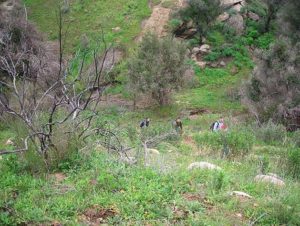
12. 1995 June_Cehn-Status of Enviro Contamination Found
http://aboutus.aju.edu/uploadedFiles/KNBC/1995_June_Cehn-Status%20of%20Enviro%20Contamination%20Found.pdf
7 pp
P. 7/7: “Tritium Map” shows OS-3 which is in exact same spot as OS-5 and OS-7. As of 2017, OS-7 still has tritium. 1995 map shows OS-5 in tritium plume.
[ER NOTE: Combined with other data analyzed in these documents as shown above, evidence of knowledge of continuous offsite tritium contamination from 1995 through 2017. See 25 for location verification.]
13. 1995 Feb_Cehn-Meeting with Rockwell
http://aboutus.aju.edu/uploadedFiles/KNBC/1995_Feb_Cehn-Meeting%20with%20Rockwell.pdf
2 pp
Nothing of note. This memo was to attorney Helen Zukin.
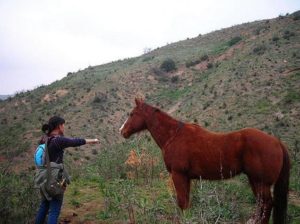
14. 1995 Aug_Cehn-Status of Enviro Contamination Found
http://aboutus.aju.edu/uploadedFiles/KNBC/1995_Aug_Cehn-Status%20of%20Enviro%20Contamination%20Found.pdf
9 pp
P. 4/9: “Like TCE, tritium mixes easily with water and moves as the groundwater moves. Unlike TCE, tritium remains in surface water-it doesn’t evaporate out. Since it can be found in surface water and in soil water, it can be detected more extensively. Figure 3 shows the current extent of tritium contamination on and under Brandeis property. Contamination extends several thousand feet downhill from the Rockwell property line. The rapid decrease in measured concentrations (from 10,000 to 10 picocuries per liter) is due to dilution with un-contaminated water. The tritium plume originates from the area of Rockwell’s research reactors and RMDF.”
[ER NOTE: This is as valid in 2017 as it was in 1995 because the tritium plume “extends several thousand feet downhill from the Rockwell property line” which is past the later Northern Buffer Zone and deeper into Brandeis-Bardin. The tritium would not have cleaned itself up retreating back up the hill in the last 22 years – it keeps slowly spreading. Cehn is correct about the source, the same source of the tritium bubbling out of Brandeis-Bardin today, the Radioactive Materials Disposal Facility and at least 10 research reactors including the Sodium Reactor Experiment.]
P. 8/9: “Tritium Map” shows OS-3 which is in exact same spot as OS-5 and OS-7. As of 2017, OS-7 still has tritium. 1995 map shows OS-5 in tritium plume.
[ER NOTE: Combined with other data analyzed in these documents as shown above, evidence of knowledge of continuous offsite tritium contamination from 1995 through 2017. See 25 for location proof.]
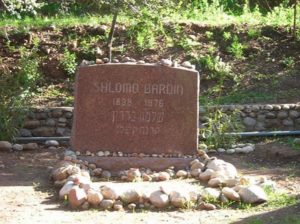
15. 1994 March_Sampling of Institute Property-Second Round
http://aboutus.aju.edu/uploadedFiles/KNBC/1994_March_Sampling%20of%20Institute%20Property-Second%20Round.pdf
5 pp
P. 2/5: “In 1992, it was detected at 0.19 and 0.22 pCi/gram, in the ravines. This may be due to Rockwell’s activities–I’ll know more after the latest sampling results are in. Plutonium has not been found in any water samples.”
[ER NOTE: This report has NO results.]
16. 1994 July_Update on Well Water Sampling New Wells
http://aboutus.aju.edu/uploadedFiles/KNBC/1994_July_Update%20on%20Well%20Water%20Sampling%20New%20Wells.pdf
2 pp
Nothing of note except this memo was to attorney Helen Zukin.
17. 1994 July_Trending of Tritium in Well RD-34A
http://aboutus.aju.edu/uploadedFiles/KNBC/1994_July_Trending%20of%20Tritium%20in%20Well%20RD-34A.pdf
3 pp
See 16.
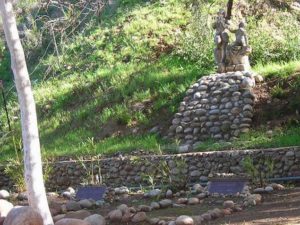
18. 1994 Feb_Sampling of Institute Property-Second Round
http://aboutus.aju.edu/uploadedFiles/KNBC/1994_Feb_Sampling%20of%20Institute%20Property-Second%20Round.pdf
3 pp
See 16.
19. 1994 April_Update_General Status
http://aboutus.aju.edu/uploadedFiles/KNBC/1994_April_Update_General%20Status.pdf
2 pp
See 16.
20. 1994 April_Telephone Notes
http://aboutus.aju.edu/uploadedFiles/KNBC/1994_April_Telephone%20Notes.pdf
1 pp
Nothing of note.
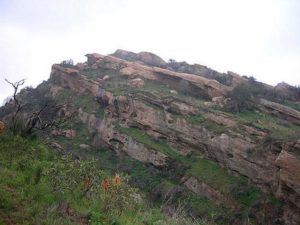
21. 1994 April_Sampling of Rockwell’s Wells on BBI
http://aboutus.aju.edu/uploadedFiles/KNBC/1994_April_Sampling%20of%20Rockwell’s%20Wells%20on%20BBI.pdf
3 pp
No sampling or testing data results.
22. 1993 Jan_Letter to McLarenHart re Multi-Media Sam Report
http://aboutus.aju.edu/uploadedFiles/KNBC/1993_Jan_Letter%20to%20McLarenHart%20re%20Multi-Media%20Sam%20Report.pdf
2 pp
No sampling or testing data results.
23. 1992 Cehn-Report on Results of Enviro Radioactivity Survey_BBI
http://aboutus.aju.edu/uploadedFiles/KNBC/1992_Cehn-Report%20on%20Results%20of%20Enviro%20Radioactivity%20Survey_BBI.pdf
25 pp
Impossible to understand what these measurements mean with “Gamma Scan Results pCi/gm-wet” parameters. No explanations given.
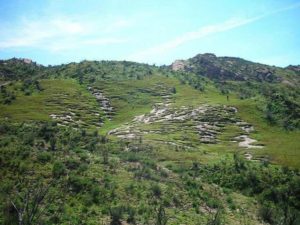
24. 1991 March_Groundwater Tech Inc_Report on Possible Enviro Concerns_BBI
http://aboutus.aju.edu/uploadedFiles/KNBC/1991_March_Groundwater%20Tech%20Inc_Report%20on%20Possible%20Enviro%20Concerns_BBI.pdf
23 pp
P. 10/23: “Groundwater flow is likely to help push contaminants northward across the Rockwell/Brandeis-Bardin property. Figure 5 is a copied portion of a water-level elevation map created by Groundwater Resources Consultants, Inc. for the Third Quarter 1990 SSFL Groundwater Monitoring Report. Some groundwater elevation contour lines have been interpolated across Brandeis-Bardin property for the present report. Note the strong groundwater gradient to the north and north-northwest along the Rockwell/Brandeis-Bardin boundary. It is quite possible that the pressure head allowing natural water flow from wells OS,1, OS-2, 08-3, 08-4 and 08-5 and spring 08-8 is provided by this circumstance of groundwater surface geometry. (That is, water produced from the OS wells and spring is probably sourced in the elevated SSFL region just south).”
[ER NOTE: Since 1991, BBI should have known that SSFL groundwater pushes contaminants northward underneath the surface of its property.]
P. 11/23: “Analyses should be by a State-certified laboratory only, and proper chain-of custody documentation for samples should be maintained.”
[ER NOTE: Chain of custody issues in 2017 indicate a problem perhaps foreseen here.]
P. 11/23: “Detection limits for analytes should be at or below California Department of Health
and Safety maximum contaminant levels (MCLs) for drinking water.”
[ER NOTE: As Brandeis-Bardin’s Toxic Denial showed, fluoride exceeds its MCL and hasn’t been reported.]
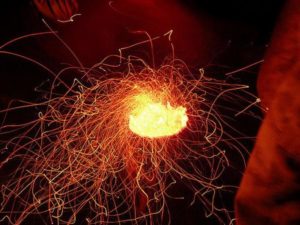
25. 1991 Cehn-Report on Results of Enviro Radioactivity Survey_BBI_1991
http://aboutus.aju.edu/uploadedFiles/KNBC/1991_Cehn-Report%20on%20Results%20of%20Enviro%20Radioactivity%20Survey_BBI_1991.pdf
13 pp
P. 7/13: Map shows OS10 (not the Bathtub Well) is at where EnviroReporter.com figured where the Old Well campsite probably was and is.
P. 12/13: “OS3, OS4 & OS5
These 3 springs are located close to each other. OS3 and OS5 are labeled on a
steel pipe, and are within a few yards from each other. OS4 is up the hill
about 50 meters.”
[ER NOTE: Proof OS-3 & OS-5 are side by side. Relevant for 12 and 14.]
P. 12/13: “OSlOA
This spring is at the end of the dirt road, past the cemetery. Spring empties into bath tub. Rockwell’s “OSlO” appears to be mis-mapped, if this is the same spring.
[ER NOTE: This doesn’t jive with DTSC’s map of OS-10. This map also has the added “A” designation – “OS10A” – further confusing matters. There is the possibility that there are two bathtub wells, however unlikely.]
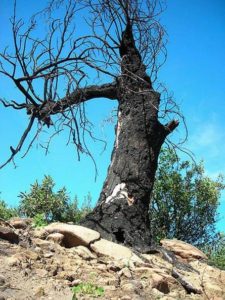
26. Annotated Brandeis-Bardin Campus Map
http://aboutus.aju.edu/uploadedFiles/Updates1/BBC%20Map.pdf
[ER NOTE: http://www.dtsc-ssfl.com/files/lib_pub_involve/other_docs/67456_SSFLMonthlyUpdateMay2017.pdf says under DOE :
“DOE is planning to implement a Groundwater Interim Measure well at the Area IV Former Sodium Disposal Facility (FSDF). The scope of work includes aquifer property testing, extended aquifer pumping, treatment of extracted groundwater, and discharge of treated water at the FSDF site. Additionally, the plan proposes treating and discharging the extracted groundwater in Area IV instead of connecting to the Groundwater Interim Measure conveyance and treatment system. However, precipitation this last rainy season was enough to replenish the shallow groundwater. DOE will resume the planned testing to assess and optimize the effectiveness of groundwater extraction at the FSDF.”
This was sent by DTSC to EnviroReporter.com in May 2017, meaning that the groundwater contamination woes of Brandeis-Bardin will likely continue since the source of those woes has yet to be pumped, extracted and treated.]
*Public photographs of a Brandeis-Bardin Campus survival camping class March 2, 2008 are reprinted through Fair Use and credited to Danielle D.
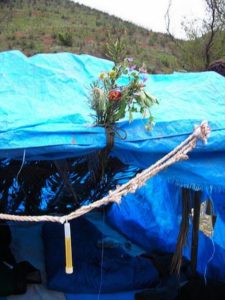
24 Years of Award-Winning SSFL/Rocketdyne Reporting
June 1998 – June 2022
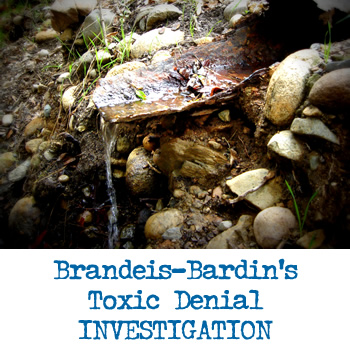












Recent Comments